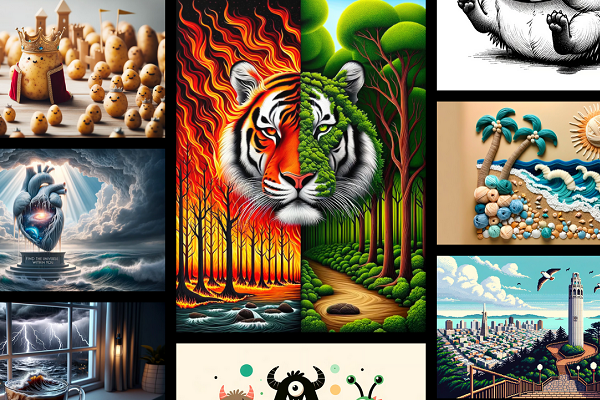OpenAI Teases DALL-E 3 Text-to-Image Generator Built Into ChatGPT
OpenAI has unveiled DALL-E 3, the next iteration of its text-to-image platform. DALL-3 will be integrated into ChatGPT and available for ChatGPT Plus and ChatGPT Enterprise subscribers in October.
DALL-E 3
DALL-E 3 will work through text prompts to ChatGPT within larger conversations with the generative AI chatbot. Users can simply describe desired images or art styles to the chatbot, which will then create corresponding visuals. OpenAI highlighted how DALL-E 3 improves on its predecessors with more accurate text rendering and more detailed textures. The new image generator will be able to realistically generate readable paragraphs and passages within images, according to OpenAI. The integration also unlocks new use cases, combining OpenAI’s viral conversational model and advanced image synthesis. Users can leverage ChatGPT’s knowledge base to produce images that DALL-E 3 renders into intricate visuals. The company hasn’t indicated if DALL-E 3 will be included in ChatGPT’s API like DALL-E 2.
“Modern text-to-image systems have a tendency to ignore words or descriptions, forcing users to learn prompt engineering. DALL·E 3 represents a leap forward in our ability to generate images that exactly adhere to the text you provide,” OpenAI explains in the DALL-E 3 landing page. “When prompted with an idea, ChatGPT will automatically generate tailored, detailed prompts for DALL·E 3 that bring your idea to life. If you like a particular image, but it’s not quite right, you can ask ChatGPT to make tweaks with just a few words.”
DALL-E 3 also attempts to address concerns about any unapproved use of images or ripping off an artist’s work, which are increasingly common sources of lawsuits against generative AI companies. The model will reject attempts to create content mimicking recognizable living artists and their signature styles, along with updated filters to keep the images within OpenAI’s guidelines and to try to reduce problematic biases. Less prominent artists can supposedly opt out of having their work used to train DALL-E 3, but apparently, they would need to send OpenAI every single image they want to remove from any training dataset and request its removal. The mechanism is not readily available yet and the sheer volume of images some artists would need to submit makes it seem more like a way of discouraging opt-outs. That’s before even considering the time OpenAI would have to spend going through the requests and removing them from the training database. The same goes for images made with DALL-E 3, which are owned by their creators, as is the case with DALL-E 2.
The company also said it’s working on a ‘provenance classifier’ tool that would be used internally to identify images produced by DALL·E 3. OpenAI said these ethical safeguards aim to empower human creatives by avoiding imitation of original works or artists without consent. For now, OpenAI is encouraging sign-ups to try DALL-E 3’s capabilities firsthand when it debuts in October.
Follow @voicebotaiFollow @erichschwartz









